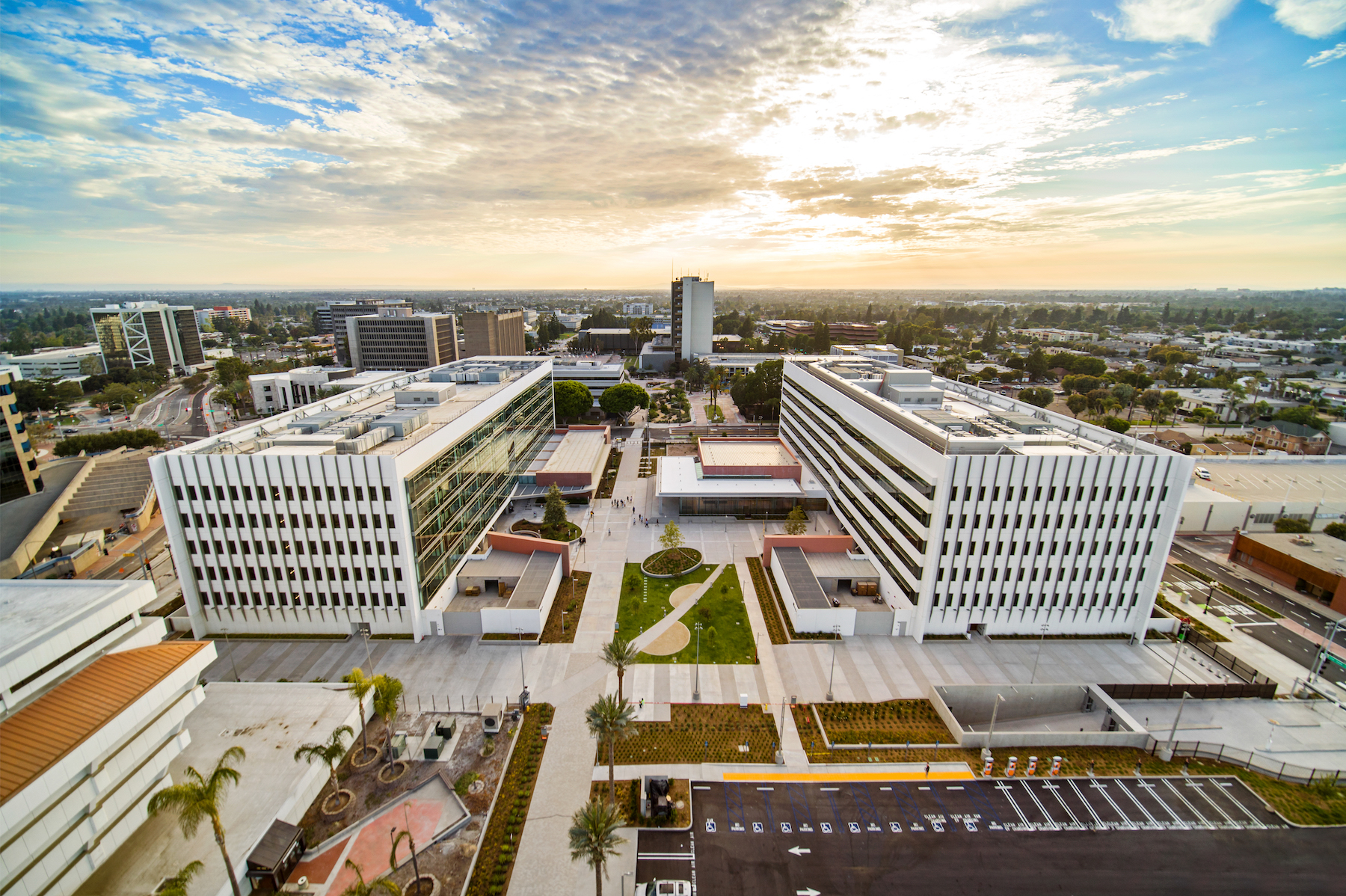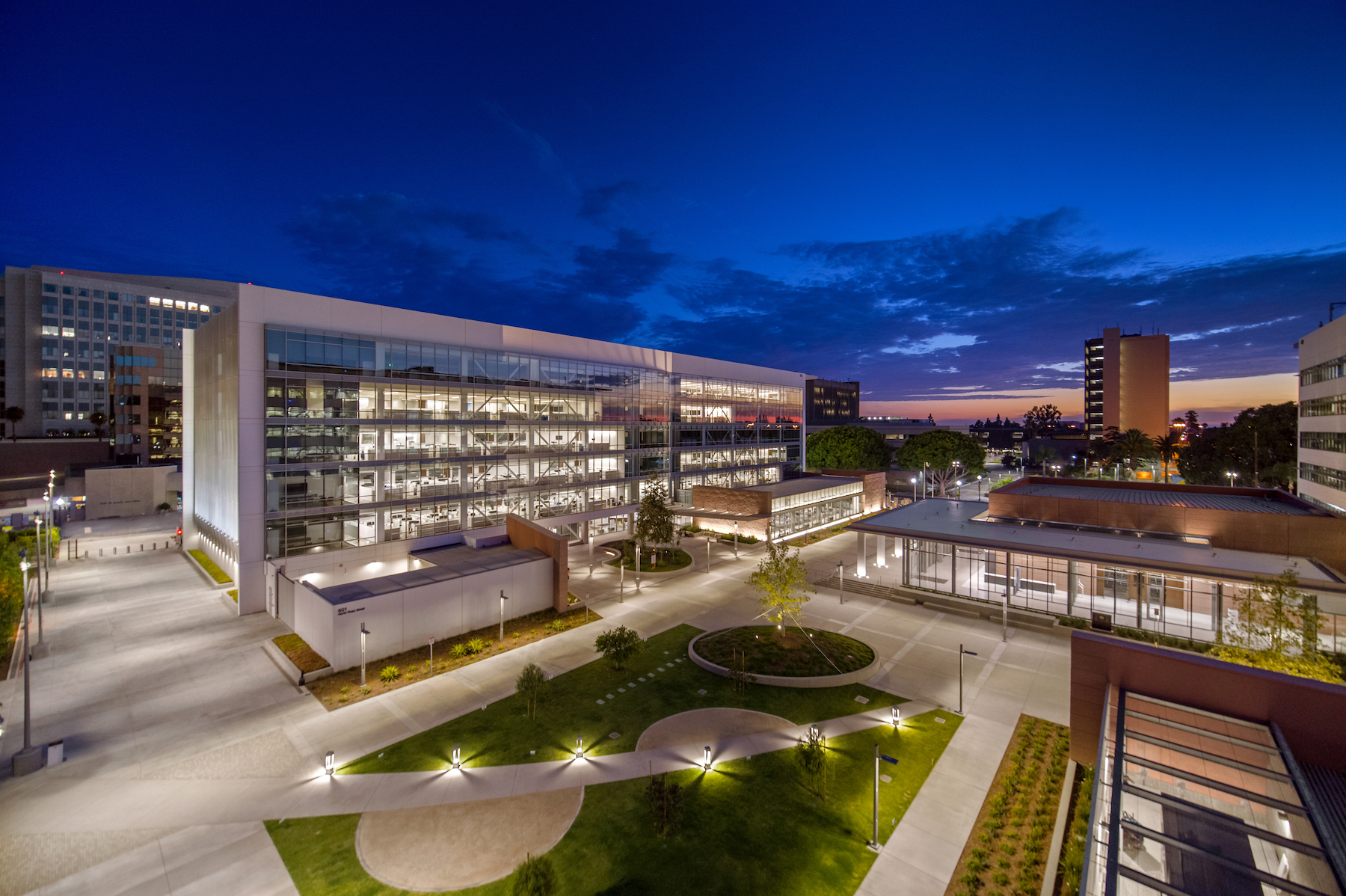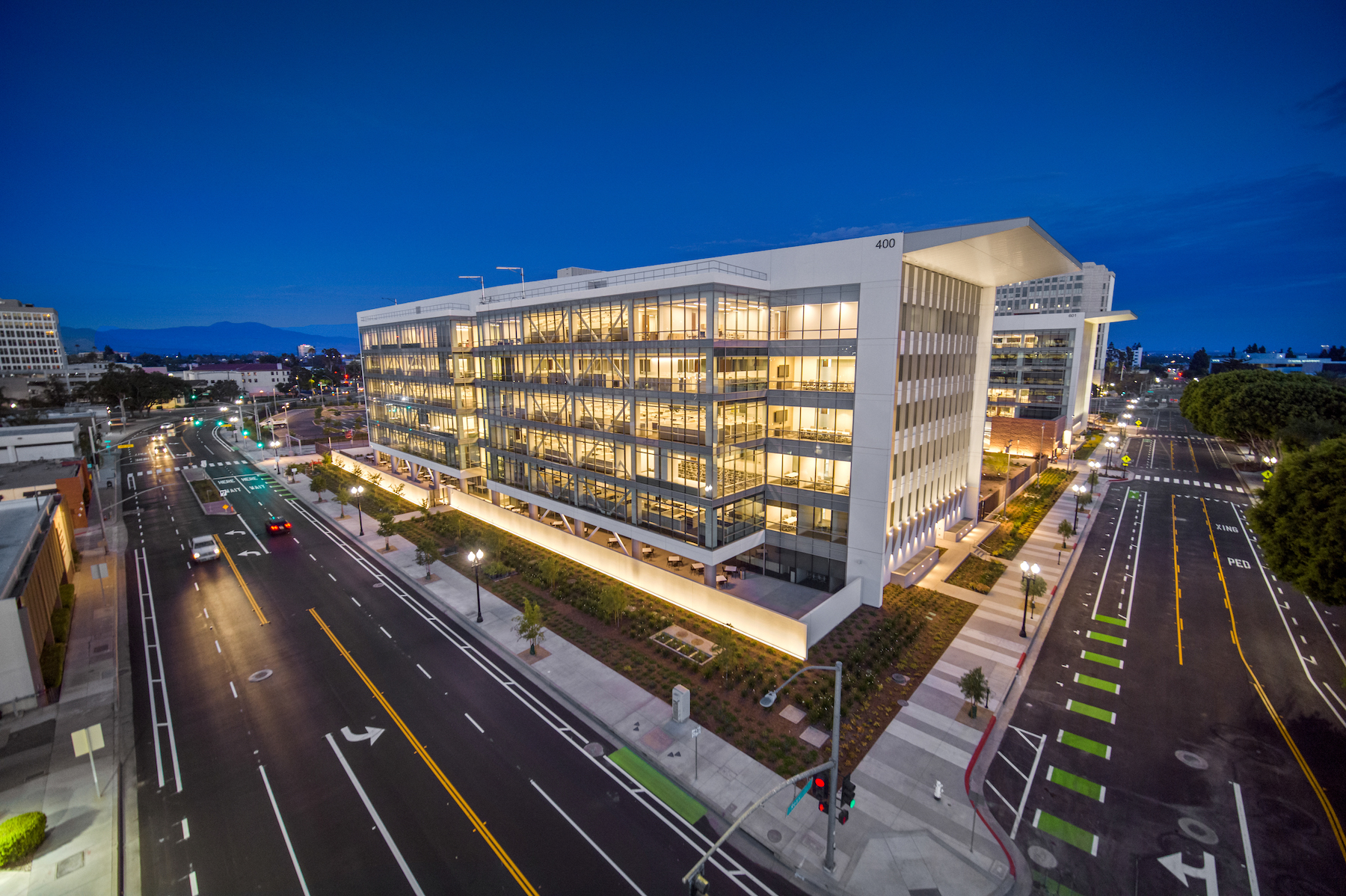Orange County’s recently opened County Administration North (CAN) building caps an urban center development that constitutes one of California’s largest ever P3 projects. Spanning 17 acres, the Santa Ana property includes 16 county-owned buildings and more than 1.6 million sf of indoor space. An innovative public-private partnership (P3) delivered the $400 million complex on time and under budget, according to LPA Design Studios, which provided architecture and engineering services. The result is a new urban center that promotes outdoor spaces, cuts energy costs, and reworks the way the county interacts with the public.
The six-story, 250,000 sf CAN building includes a state-of-the-art hearing room for the Board of Supervisors designed to increase openness and public accessibility. The new Civic Center complex consolidates and reimagines the workplace for a dozen county departments, and significantly reduces operating costs. The design of CAN and the nearby County Administration South (CAS) building, which opened in 2019, reduced energy use by more than 76% from the AIA 2030 Commitment benchmark, primarily through passive design strategies.
The P3 process began with a Facilities Strategic Plan, co-authored by LPA and Griffin Structures, a multidisciplinary firm that provides innovative project delivery solutions. This plan explored all aspects of the county’s operations and real estate assets. When this evaluation kicked off, the County had not attempted a major capital improvement project since filing for bankruptcy protection in 1994. Many of its buildings were more than 60 years old.
The civic center construction project was structured on tax-exempt financing backed by the county’s long-term lease. When the lease expires, the county will take full ownership of the buildings. The P3 arrangement included a guaranteed maximum price established by the developer and its team. This put pressure on the design and construction teams to meet budget and schedule parameters. The two County Administration buildings were delivered on time and under budget, returning an estimated $8 million in aggregate savings to the county.
The two main buildings were conceived through a resilient design that allowed for higher ceilings and greater infiltration of natural light in workspaces. Interior design elements created more efficient workspaces that responded to the work habits of different departments. Work environments were developed around access to natural light, multi-use conference rooms, and collaborative spaces, creating a workplace expected to help the county compete to attract and retain talent. In the public plaza, landscape architects designed a rich diversity of spaces representing the region’s landscape.
On the Building Team:
Owner and/or developer: County of Orange (California)/Griffin Structures
Design architect: LPA Design Studios
Architect of record: LPA Design Studios
MEP engineer: LPA Design Studios
Structural engineer: LPA Design Studios
General contractor/construction manager: Swinerton



Related Stories
Market Data | May 6, 2022
Nonresidential construction spending down 1% in March
National nonresidential construction spending was down 0.8% in March, according to an Associated Builders and Contractors analysis of data published today by the U.S. Census Bureau.
Building Team | May 6, 2022
Atlanta’s largest adaptive reuse project features cross laminated timber
Global real estate investment and management firm Jamestown recently started construction on more than 700,000 sf of new live, work, and shop space at Ponce City Market.
Sponsored | BD+C University Course | May 5, 2022
Designing with architectural insulated metal wall panels
Insulated metal wall panels (IMPs) offer a sleek, modern, and lightweight envelope system that is highly customizable. This continuing education course explores the characteristics of insulated metal wall panels, including how they can offer a six-in-one design solution. Discussions also include design options, installation processes, code compliance, sustainability, and available warranties.
Higher Education | May 5, 2022
To keep pace with demand, higher ed will have to add 45,000 beds by year-end
The higher education residential sector will have to add 45,000 beds by the end of 2022 to keep pace with demand, according to a report by Humphreys & Partners Architects.
Multifamily Housing | May 5, 2022
An Austin firm touts design and communal spaces in its student housing projects
Rhode Partners has multiple towers in various development stages.
Legislation | May 4, 2022
Washington is first state to mandate all-electric heat for new large buildings
Washington recently became the first state to require all electric heat for new buildings.
Building Team | May 4, 2022
Mancini Acquires Gertler & Wente Architects, Expanding the Firm's Opportunities in New Market Sectors
National design firm Mancini Duffy - with a 100+-year-old history and tech-forward approach based in New York City - announces the acquisition of Gertler & Wente Architects to further expand its footprint in the healthcare, multi-family residential, restoration, institutional, and religious sectors.
Contractors | May 4, 2022
CFC Construction names Pat Smith president
CFC Construction is proud to announce that Pat Smith has been promoted to President of the Colorado-based general contractor.
Sponsored | Healthcare Facilities | May 3, 2022
Planning for hospital campus access that works for people
This course defines the elements of hospital campus access that are essential to promoting the efficient, stress-free movement of patients, staff, family, and visitors. Campus access elements include signage and wayfinding, parking facilities, transportation demand management, shuttle buses, curb access, valet parking management, roadways, and pedestrian walkways.
Sponsored | BD+C University Course | May 3, 2022
For glass openings, how big is too big?
Advances in glazing materials and glass building systems offer a seemingly unlimited horizon for not only glass performance, but also for the size and extent of these light, transparent forms. Both for enclosures and for indoor environments, novel products and assemblies allow for more glass and less opaque structure—often in places that previously limited their use.
















